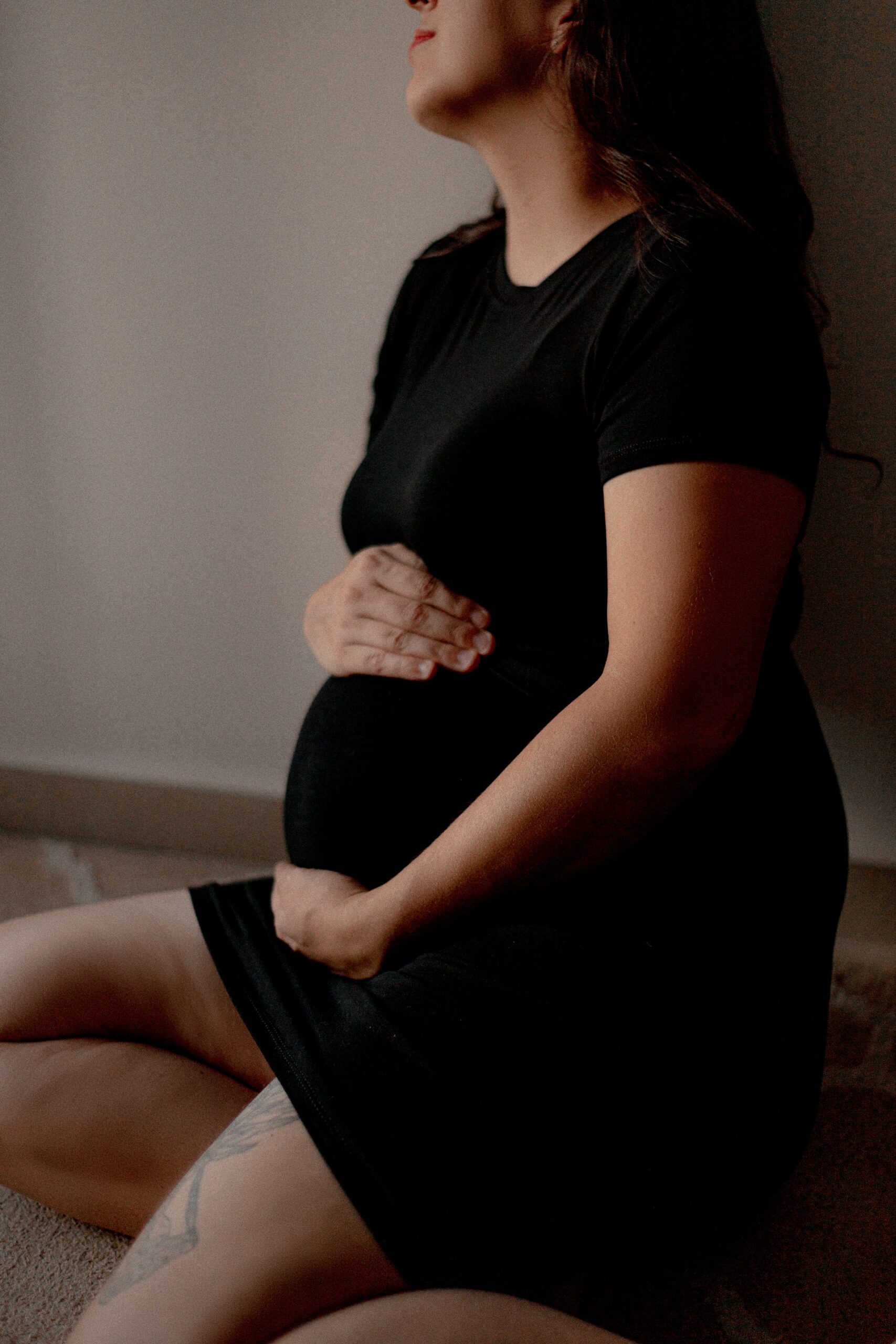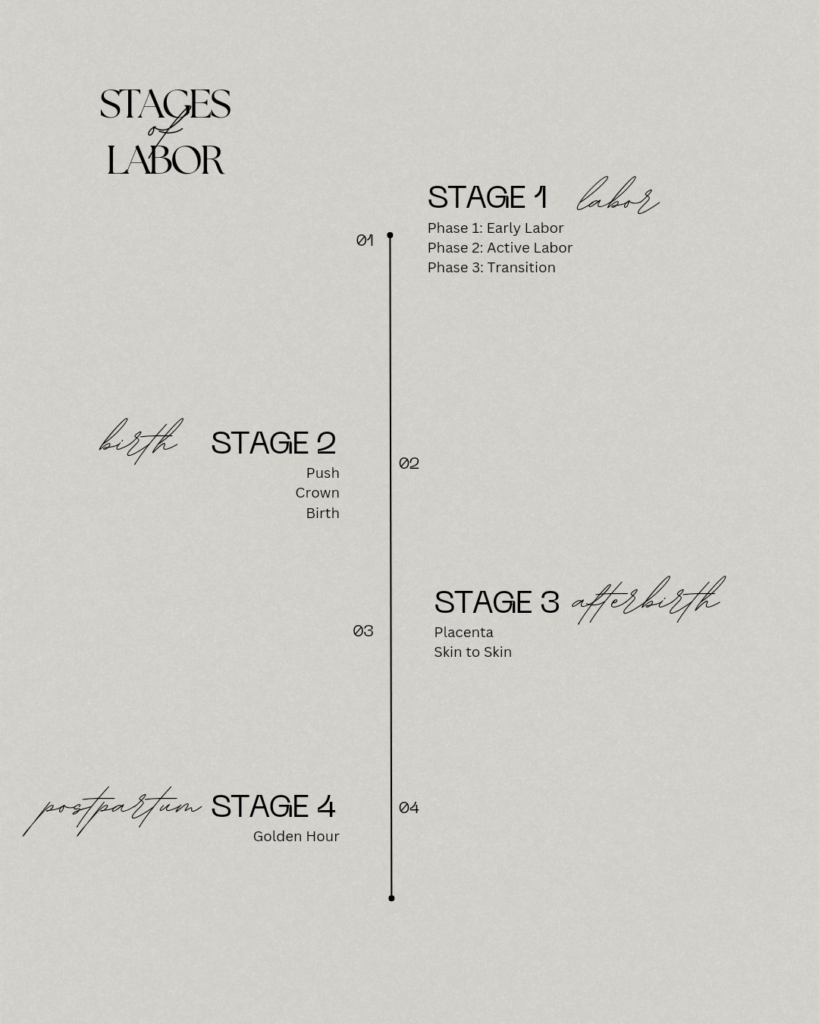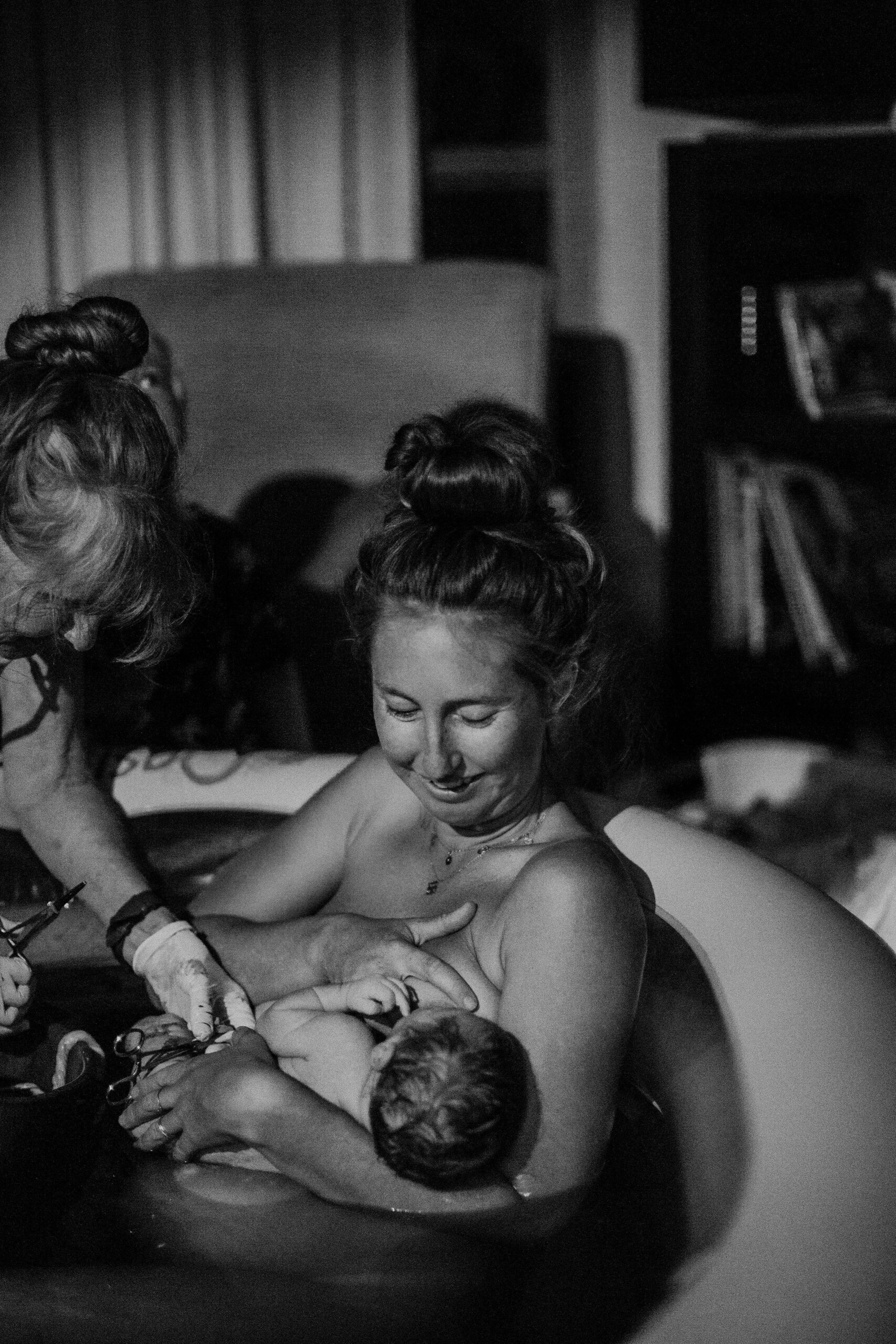the blog
Natural Birth & Female Health

Reclaim Birth Wisdom in Preparation for an Autonomous Labor
Understanding how birth unfolds is essential to preventing complications, interventions and other unwanted outcomes.
I practice prevention through preparation and I help new mamas begin their preparation for the birth they envision by shedding light on the mysteries of labor.
Mamas go from ——->>
..fearful, nervous, overwhelmed and unclear about their birth
to—->>>>
Confident, trusting, and inspired after reclaiming birth wisdom.
Learning the stages of birth and the phases of labor can help you prepare for birth because you’ll know what can be expected, confidently know what is and isn’t normal, when and what tools to use, practice informed decision making and update your birth team.
Especially in a society where birth is portrayed as long, painful and intense, it is important to learn what actually takes place within your body and with baby.
Knowing the stages of birth is part of your journey to deconstructing the deep conditioning and fear surrounding birth that we’ve all been exposed to.
Reclaiming the wisdom around birth and the female body is reclaiming your autonomy and reclaiming birth sovereignty.
I am a certified professional midwife, I have supported hundreds of women in natural, unmedicated birth and I want to share with you the foundations of biology based, intuitive birth by exploring the stages of labor.
Stages of Birth and Phases of Labor
A quick map of labor–>

How the Medical Model Defines Labor
Early labor → contractions every 5-20 minutes lasting 30-45 secs, dilation 0-5cm
Active Labor → contractions every 2-8 minutes 45-60 secs, dilation 5-7cm
Transition → contractions every 1-2mins lasting 60-90 secs, dilation 7-10cm
While medical textbooks define the phases of labor by your contraction pattern and your dilation, natural birthworkers know that every woman’s contraction pattern can vary.
Some women contract every 3 minutes from the start of labor while others contract every 10 mins through their entire labor.
The body knows what it needs in the moment and when labor is left undisturbed we see labor patterns that aren’t contained within the concept of time.
| Stages of Labor | Contraction | Cervix | Consciousness |
| Stage 1: Early Labor | 5-20 mins, 30-45 sec | 0-5cm | Beta Brainwaves, Externally Engaged |
| Stage 1: Active Labor | 2-8 mins, 45-60 sec | 5-7cm | Theta Brainwaves, Internally Engaged |
| Stage 1: Transition | 1-2 mins, 60-90 sec | 7-10cm | Alpha & Theta, Internally Engaged |
| Stage 2: Birth | 1-4mins, 60-90 sec | 10cm | Alpha & Theta, Internally Engaged Higher Consciousness |
Women will experience a shift in their state of consciousness >>
•in early labor engaged with their external (surrounding) environment
•in active labor they are internally engaged and drawn inward (at least during contractions)
•in transition they begin to ground themselves in their external environment while maintaining a strong internal awareness
•as baby comes down onto the pelvic floor and through their roots chakra they will reach a state of higher consciousness
This is typical of undisturbed natural birth. But with a distracting environment or disruptive birth team, women can be pulled out of their internal focus causing pauses or long labors.
These disruptions lead to interventions that further lead to complications.
So how do you know what phase of labor you’re in?
Don’t worry, you will know without a doubt when you’re in labor, when your labor shifts into active labor and when it is time to push! Let’s explore these shifts further.
Early labor
Early labor can last hours or days.
For most women, early labor is a gradual progression where women are still engaged with their external environment.
You can still talk and move between and even during contractions. You are still able to nourish your body, eat and hydrate normally.
The recommendation in early labor is to enjoy your normal routine, rest when you’re tired and keep your birth team updated.
Typically your birth team is supporting you virtually by phone or text. May be they do an in person visit to check in with you, decide on a plan for active labor and give your direction for how to support labor at this phase.
•You will start off slow with mild, irregular and infrequent contractions.
•You might be experiencing contractions every 5-20 minutes lasting 30-45 secs
•Your baby may be high in the pelvis, just above the pelvic inlet OR well engaged in the pelvic bowl, low in the pelvis
•The cervix is between 0-5cm dilated,
•The cervix might be anywhere from closed, posterior (towards your spine), long and firm to open, midline, and shortening, softening and thinning (0-60% effaced).
RELATED: Read about the cervix in labor.
Active Labor
You know you’re in active labor when—–>>
you begin to shift your focus more towards the work your body is doing and away from what is going on around you.
If you’re unsure if you’re in active labor, it is probably to not active labor.
I know this is vague but trust us birthworkers, we get this question often and we tell our mama’s you will know without a doubt that you’re in active labor when you move into this phase.
You will sense the shift from early to active labor when you’re not longer engaging with your external environment.
When you’re in active labor you won’t be thinking or analyzing your labor as much.
This is because your labor pattern in active labor will draw you inward and redirect your focus to the present moment and the work at hand.
In active labor,
•baby has descended further into the pelvic bowl, head on the cervix and with each contraction the cervix is stimulated by baby’s head or by a bulging bag of waters (a bubble of amniotic fluid in front of baby’s head that is forming at the cervix).
•The cervix is between 5-7 cm, midline to anterior (towards your pubic bone), soft, thin, and beginning to open around either baby’s head or a bubble of amniotic fluid.
•You might be experiencing contractions every 3-5 mins that last about 45-60 secs.
Active labor can last 2 to 12 hours. That is a wide range but it depends on the position of baby and the physical, mental and emotional state of the mother.
As baby makes contact with your cervix the sensations of each contraction can intensify further pulling your awareness from your surrounding environment towards an inner awareness or even an out of body experience.
Most mama’s are finding their rhythm in active labor, their anchor, their mantra, their grounding rhythmic tool to help them through active labor.
This rhythm can be—->>
•swaying
•making eye contact
•eyes closed
•pacing
•rocking
•repeating a word or phrase your mantra
•focusing on breathwork
•using vibration & vocalizations
•holding in stillness & silence
Finding your rhythm helps you connect deeper with your body, it helps channel the intense energy of labor, and it stimulates flow state: theta brainwaves, natural pain relief, pleasurable, trance state of labor.
Usually the birth team arrives at some point during active labor to support mama and baby. It’s up to you if you want them by your side or giving you support by being near by maybe in another room. The most important thing with having your support team there with you in active labor is maintaining your inward focus.
Don’t let the arrival of your birth team distract you or pull you from your labor. Birthworkers know to keep questions to a minimum, lights dim, movements slow and quiet so to not bring your awareness to your frontal cortex pulling you out of your primal brain.
Once baby has descended down onto your pelvic floor, your root chakra is activated and you come back into your body for transition.
Transition
Transition is the phase between active labor and pushing stage. It is the most intense phase of labor but typically the shortest. You might be experiencing contractions every 1-3 mins lasting from 60-90 secs. Your cervix is 80-90% effaced or very thin, soft, and open to 7-10 cm.
You may experience a break or slowing down of contractions just before transition or just before pushing. This lull is the body resting and recovering for the intensity of transition and pushing and can support the birthing mother by allowing the body to rest, avoiding maternal exhaustion or postpartum hemorrhage, and protecting the baby from fetal distress or low heart tones-Another amazing design of the human birthing body.
We usually see breaks in labor btw 4-5cm and 7cm or 10cm. These breaks are a biologic adaptation that as stated above, protect both mama and baby.
Sadly inexperienced birthworkers and most hospital staff lack the training to recognize the difference btw a physiologic break and a stalled labor due to a complication.
Often times they augment labor with induction methods at these very important moments in labor to increase labor patterns when what the mama and baby need most is to rest and recover.
It is this kind of management (or mismanagement) that leads to provider caused complications.
By learning about the First Stage of Birth-Labor, you have greatly decreased the risk of complications and equipped yourself with the knowledge to support a smooth labor.
Labor is just one stage out of the three stages of birth-
1st Stage -Labor(early, active and transition phase)
2nd Stage-Birth (pushing & birthing the baby)
3rd Stage -Afterbirth(the birth of the placenta) and Postpartum
Once the cervix is completely soft and open, you will connect with your power and birth baby.
What affects your labor pattern and length?
Our bodies are intelligent and they know what we are capable of and can adapt labor patterns to changes in our experience like stress, nourishment, joy and fear.
So when our bodies go into labor —> the labor pattern matches the physical and emotional state of the birthing woman.
For example: if is woman is in a calm and physically relaxed state her labor may mirror a smooth progression
If a woman is holding onto tension, or is going in and out of a state of stress, her contraction pattern may mirror those oscillating emotions by starting and then stopping labor each time she enters and exists a stressful state.
Related: Fear and How it affects the 3 Interconnected Dimensions of Birth
Learn more about how to use breathwork and other tools to support a natural, biology based and intuitive led birth
Related: Breath and How to integrate intentional breathwork in birth
>>
